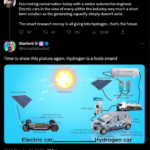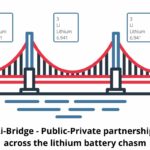General Atomics announced on Tuesday development of a small nuclear modular reactor that they claim is the most advanced high-performance reactor in the world. The company has submitted a proposal to the US Dept. of Energy to bring the reactor design to the market. Their design offers a use for the existing stockpile of used nuclear fuel, slashes the cost for nuclear power, nearly eliminates nuclear waste, and minimizes the chance of nuclear proliferation.
The Energy Multiplier Module, as it’s called, is a modified version of General Atomics high-temperature, helium-cooled reactor. It is capable of using spent nuclear fuel, like depleted uranium, and producing electricity and industrial process heat, without conventional reprocessing. The company claims the reactor fits all major requirements for the new Department of Energy (DOE) initiative promoting an innovative small modular nuclear reactor. The DOE hopes small modular nuclear reactors will be more economic, safer, less waste producing and more proliferation resistant.
“We welcome the opportunity to join the Department of Energy in advancing the next generation of nuclear technology for reliable and cost-effective clean energy, for this century and beyond,” said Dr. John Parmentola, Senior Vice President of Energy and Advanced Concepts Group and an MIT-trained physicist.
The design is a fraction the size of current nuclear reactors. It can operate for 30 years without refueling versus 18 months for current light water reactors. It does not use water for cooling, giving greater site choice flexibility.
The design is said to be highly efficient, while reducing size. The result is reducing electricity costs by 40% over current reactors, while producing 80% less nuclear waste. Waste reduction occurs because it uses a single pass-through fuel cycle, rather than having to be continually refueled.
The Energy Multiplier Module is fueled with a mix of “starter” fuel (~12% U235) and used nuclear fuel, otherwise known as depleted uranium. The starter U235 is consumed as the used nuclear fuel/DU is converted to fissile fuel. Additionally, all EM2 heavy metal discharges could be recycled into new EM2 reactors, making the system a closed loop nuclear fuel cycle. It greatly reduces the need for long-term repositories of spent nuclear fuel, and minimizes nuclear proliferation risks.
Because EM2 reactors use spent nuclear fuel, it provides a use for the existing stockpile of such materials. The company estimates there is enough spent fuel in storage at US nuclear power plants to fuel 3,000 EM2 reactors, and there is enough depleted uranium in storage for 30,000 reactors. Just 400 EM2 reactors could completely replace the existing fleet of nuclear reactors in the U.S.
- Is there enough Grid Capacity for Hydrogen Fuel Cell or Battery Electric cars? - April 23, 2023
- Is Tesla finagling to grab federal NEVI dollars for Supercharger network? - November 15, 2022
- Tesla announces the North American Charging Standard charging connector - November 11, 2022
- Lightning Motorcycles adopts Silicon battery, 5 minute charge time gives 135 miles range - November 9, 2022
- Tesla Autopilot under US Dept of Transportation scrutiny - June 13, 2022
- Spectacular CNG bus fire misrepresented as EV bus fire - April 21, 2022
- Moldova, Ukraine, Georgia, Russia, and the European Energy Crisis - December 21, 2021
- Li-Bridge leading the USA across lithium battery chasm - October 29, 2021
- USA increasing domestic lithium battery research and manufacturing - October 28, 2021
- Electrify America building USA/Canada-wide EV charging network - October 27, 2021










